Searching for nuclear bombs at the Democratic convention
By Thomas Gaulkin | August 23, 2024
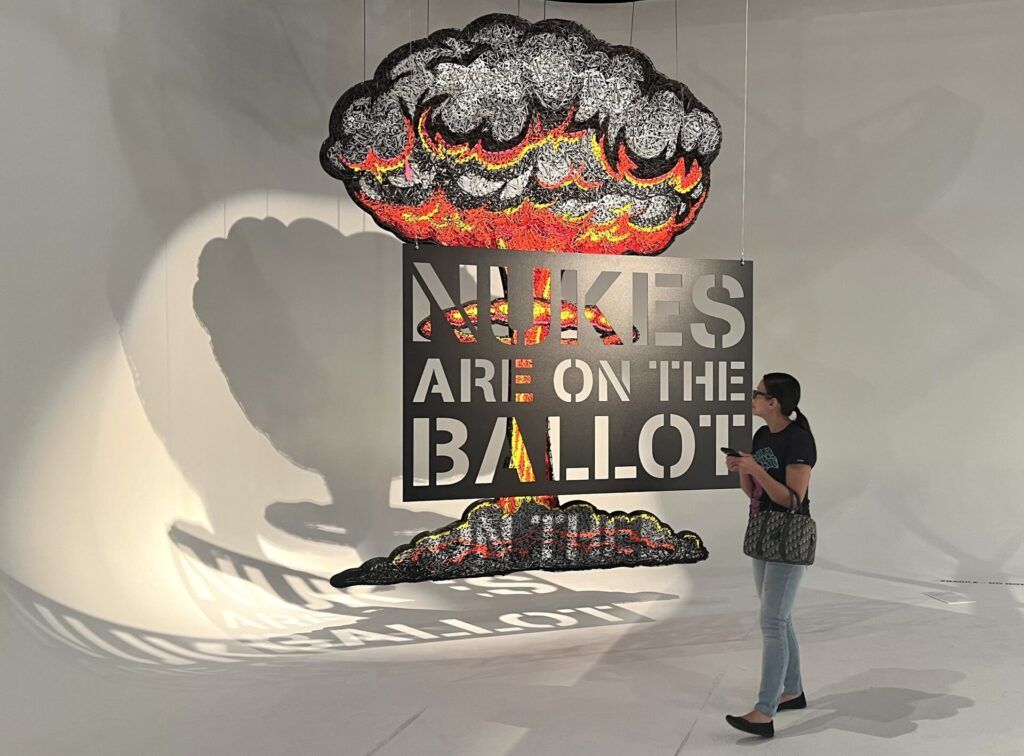 One of some 200 artworks on display at the Into Act!on 2024 exhibit in Chicago. Photo by Thomas Gaulkin
One of some 200 artworks on display at the Into Act!on 2024 exhibit in Chicago. Photo by Thomas Gaulkin
When Democrats finally put a spotlight on climate change before Kamala Harris’ acceptance speech at the Democratic National Convention this week, the timing was noteworthy. Ratings show some 26 million people tuned in to watch Thursday night, well above viewership on the convention’s previous nights. Interior Secretary Deb Haaland thanked the vice president for breaking a tie vote to pass the “most ambitious climate action plan” in the nation’s history. Maxwell Frost, the first Gen Z member of Congress, declared that “fighting the climate crisis is patriotic.” Climate change had its audience.
But what about other existential threats? On the second night of the convention, the New York Times reported on a major reorientation of US nuclear deterrence strategy towards China. In the aftermath of Israel killing a top leader of Hamas in Tehran, fear has grown that Iran might respond by moving ahead to develop a nuclear bomb. Russia has been invaded by Ukraine, inviting wild speculation about how Putin might escalate the war.
The Democrats’ 2024 party platform approved on the first night of the convention claims that the Biden administration “is showing what it means to act responsibly as a nuclear power.” But nuclear weapons were scarcely mentioned during the United Center speeches, if at all. Where were all the nukes?
On Thursday morning, I went looking for them at McCormick Place, where convention business beyond the nightly speeches was happening. From what I could find, there didn’t appear to be any nukes on the agenda during the Democrats’ Chicago residency; but the party’s Environmental and Climate Crisis Council met a couple of times earlier in the week, and there were panel discussions about climate change and the threat of AI-enabled disinformation scheduled for Thursday afternoon. I figured that since those are considered at least potential existential threats—and have important nuclear connections—I might find what I was looking for. I signed up for both sessions.
About 40 people turned up for the AI event, an interesting panel featuring women like New Mexico’s Secretary of State and Microsoft’s director of US Government Affairs discussing the the outsize impact of generative AI on women, and how electoral campaigns and the tech industry should grapple with the technology as it becomes more widespread. Concerns about the rise of pornographic deepfakes, gender biases built into training data, and confusion about what is or isn’t AI-generated were balanced against the benefits, like easing the drudgery of campaigns so candidates and campaign staff can spend more time connecting with voters.
But no nukes.
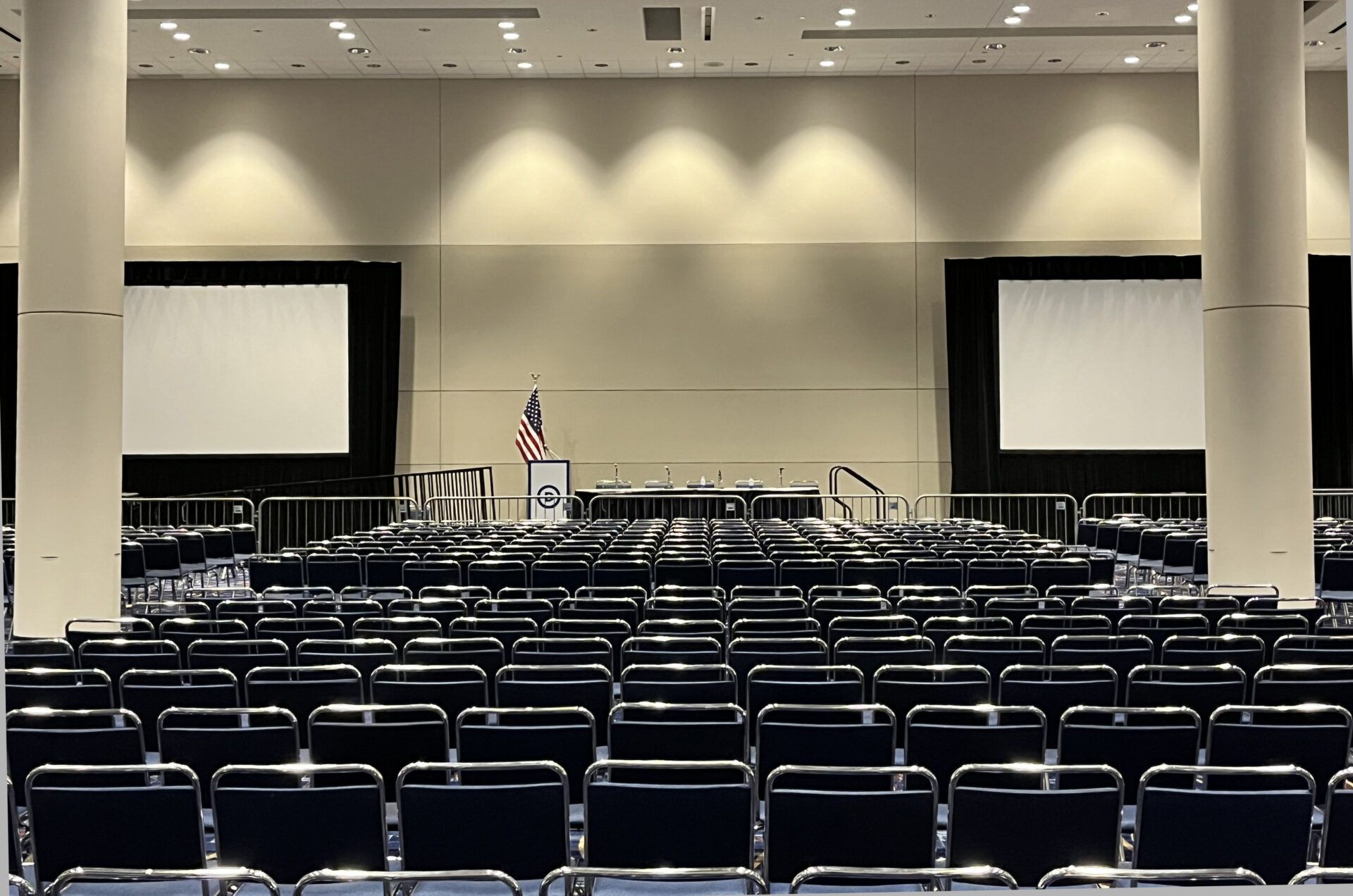
I headed back downstairs for the climate session. A big sign announced the topic: “The Latest on Climate Change.” No one was there. The speakers hadn’t shown up, and neither had the audience. None of the convention volunteers milling about outside the room knew why it had been cancelled but guessed that people had left early to see Harris’ speech back at the United Center.
The only other person I saw looking for the climate change session was Brian Beck, a city council member for Denton, Texas, and a convention delegate. He had also attended the earlier panel on the threat of AI and has concerns about nuclear danger as well, especially if Donald Trump wins in November. He recalled reports in 2019 that Trump suggested dropping a nuclear bomb into a hurricane: “He tried to deny it, pass it off as a joke. But now we actually have to consider that! What does it mean if a world leader jokes about nukes?” Beck didn’t seem to be finding any more answers than I was at the DNC. “I’m learning from this conference that there’s no point in having follow-up questions,” he said. “This is rah-rah-Kamala time!”
Staffers were starting to stack chairs and take down the DemPalooza signs. So I decided to give up on the official convention and went hunting for nukes where I already knew I could find them: a pop-up art exhibit a few blocks from the United Center.
The art show, Into Act!on 2024, was part of a DNC-adjacent partnership between TaskForce and Drive Agency, two organizations that work with non-profits to produce community-building events and public-influence campaigns around key social issues. The winding exhibition seemed impossibly large and well-designed for such a short-lived event, which featured more than 200 artworks and was intended to “empower and inspire people to vote and actively participate in our democracy,” according to the organizers. One of the biggest installations was a 10-foot-tall sculpture of a mushroom cloud with thousands of screws drilled into it to approximate the number of nuclear warheads still in existence, part of an ongoing collaboration between TaskForce and the Nuclear Threat Initiative.
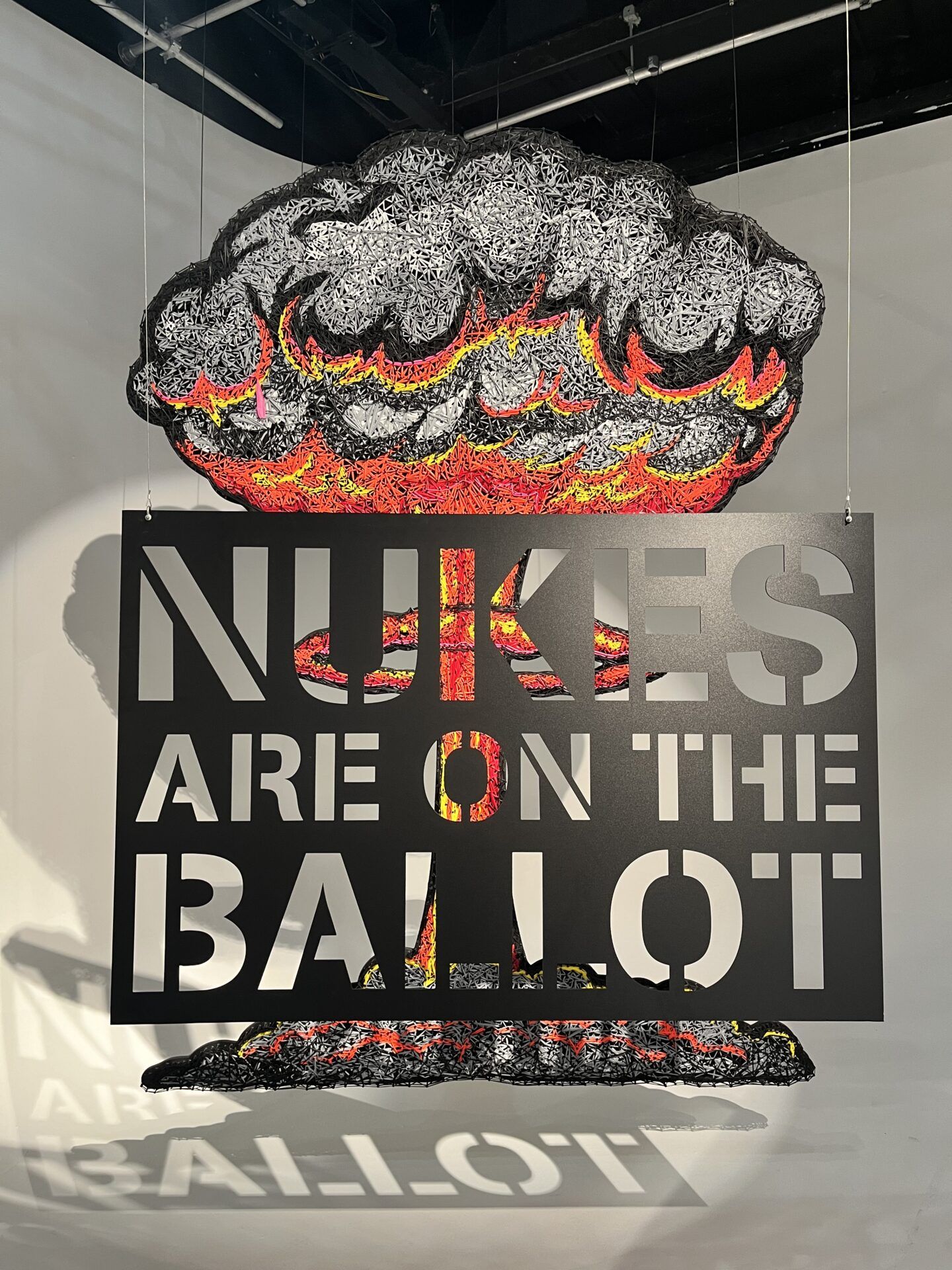
I turned a corner and there it was, a giant reminder of nuclear danger with a large stencil casting a shadow: “NUKES ARE ON THE BALLOT.” Eureka! But now, a new question arose: After four days of nuke-free politicking at the DNC, did anyone actually think that statement was true?
Micheala Sharp, a Chicago content creator, was impressed by the mushroom cloud’s imposing size. “The fact that someone chose to painstakingly put all these screws and rubber strips on there, it makes me think I’m not the only one who thinks it’s insane,” she said. “It feels like the whole thing’s gonna blow, as an art piece. One fell swoop and it’ll all collapse.”
Sharp said she had previously only thought of nuclear weapons as worrisome in the hands of leaders of other nuclear states. “I only heard [that statement] in terms of crazy maniacs who might press the button, like Putin or Kim Jong Un. But thinking about our own president as that lunatic? Yeah, that makes total sense,” she said. Asked whether it was alarming that the topic didn’t appear to come up much at the convention, she said, “This would probably ruin the mood that’s over there at the convention center. It doesn’t really seem like this and Lil Jon would go hand in hand.”
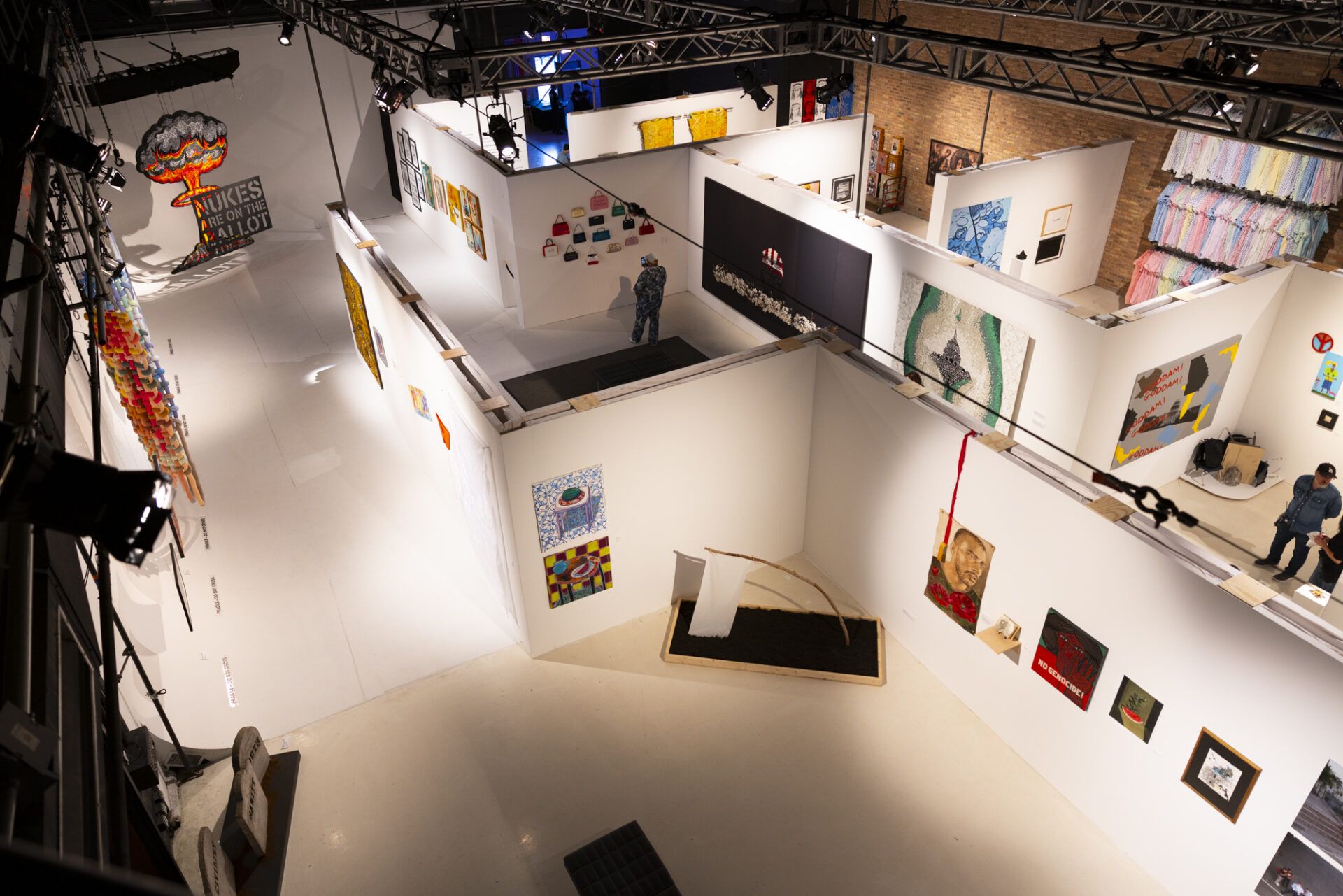
Local electrician Charles Cordero came to the exhibit mainly to support his friends running a food truck outside the space. But he wanted to take a closer look when he saw the mushroom cloud. “It’s fresh on my mind because I saw the movie Oppenheimer,” he said. “And I agree: Nukes are always on the ballot.”
The art show was ostensibly non-partisan, but there was no mistaking the general political inclination of the attendees, most of whom began gathering to watch Harris’ acceptance speech on a giant screen in the next room over. Another visitor, Pleasant Singleton, took photos of the installation and then went further than Cordero: “Trump is the nuke on the ballot.”
Yosi Sergant, founder of TaskForce and one of the creators of the piece , explained the motivation behind it. “Right now, people are making decisions about who and what they’re voting for, and we wanted to insert the conversation about nuclear arms and nuclear disarmament into people’s consideration of their electoral choices,” he said. “Artists show up before people are paying attention. They ring the alarm. They say, there’s a crisis here, we need you.”
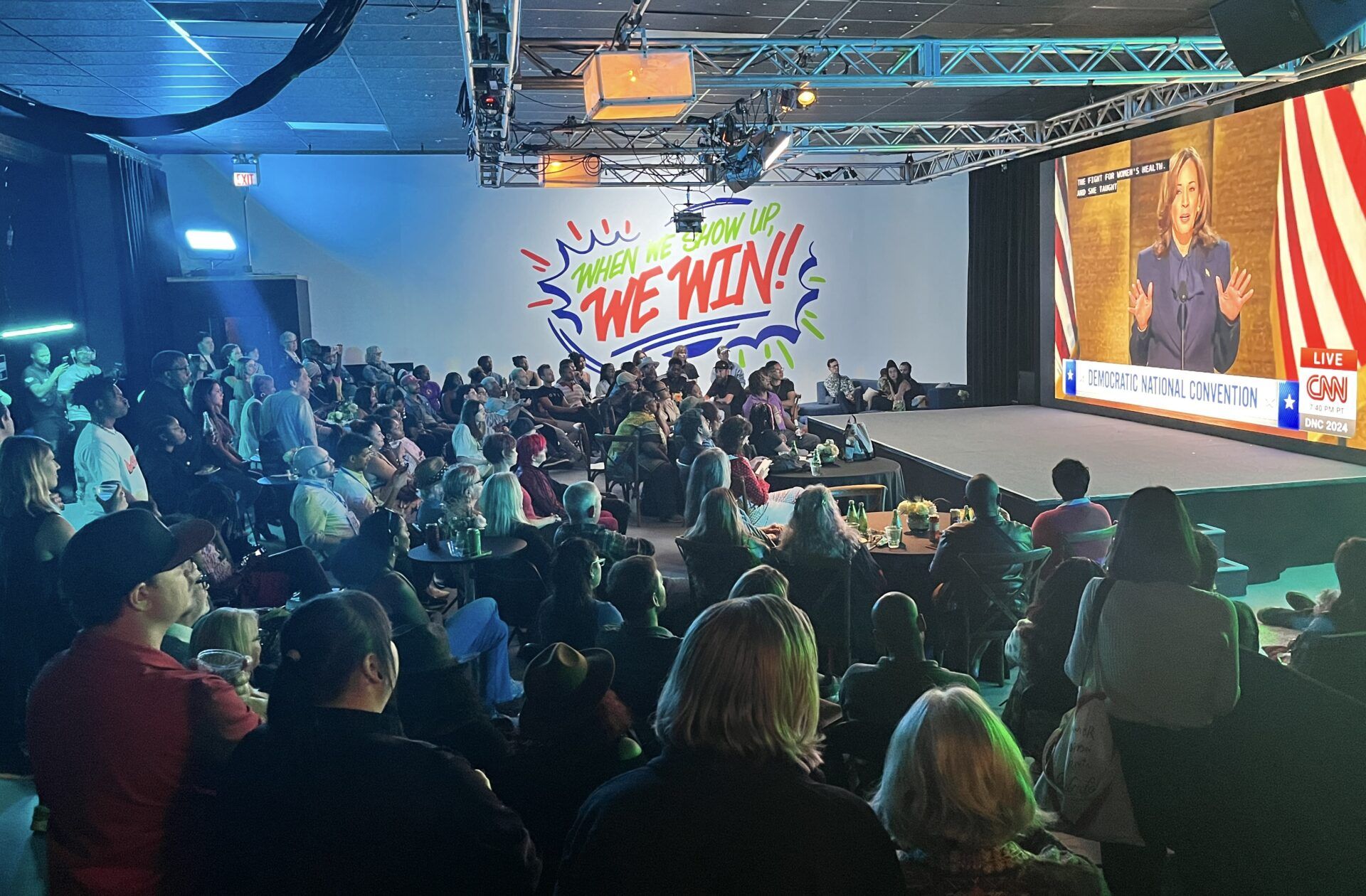
The installation was positioned across from a giant marionette of Uncle Sam controlled by arms with gold dollar-sign cufflinks, and right next to several pieces by other artists that focused on climate change. Sergant said that was no accident. “I could put it next to a racism piece, I could put it next to a climate piece, I could put it next to a poverty piece, I could put it next to the Gaza piece,” Sergant said. “There is no issue that is not related to the nuclear threat.”
By the time Harris finally took the stage for her big speech, the whole art show was already becoming a post-convention party. In a room showing the CNN broadcast of the speech, the crowd was standing-room only. The whole place erupted with cheers the moment Harris accepted the nomination, and a standing ovation followed. Then a DJ took over the gallery, and the dancing began. After an hour or so, delegates and other convention-goers began trickling into the gallery space after the short walk from the United Center. A few wandered past the mushroom cloud installation, but most of them were there to party.
Sergant told me that earlier in the week at least one governor visited the exhibit and had a good conversation with him about the mushroom cloud. “Is it going to change policy? I don’t know,” he said. “But could they have avoided it? They couldn’t. It’s a centerpiece to the show, you literally can’t walk by it without seeing it. … And if only one governor or senator sees this and inserts it into their decision-making process moving forward, then this was a win.”
Together, we make the world safer.
The Bulletin elevates expert voices above the noise. But as an independent nonprofit organization, our operations depend on the support of readers like you. Help us continue to deliver quality journalism that holds leaders accountable. Your support of our work at any level is important. In return, we promise our coverage will be understandable, influential, vigilant, solution-oriented, and fair-minded. Together we can make a difference.
Keywords: 2024 election, Kamala Harris, Presidential elections, art, chicago, democratic national convention, democrats, dnc, nuclear weapons
Topics: Nuclear Risk, Nuclear Weapons
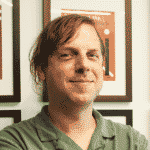















Thank you for your article on the lack of discussion about nuclear weapons. I spent many years addressing this issue at the United Nations and to professional, government, academic, and community groups. I encountered a variety of responses, including ‘you are scaring us’. Likewise, at the DNC, they concentrated on the voters’ favorite topic, the economy. They addressed neither nuclear weapons nor did they address the issue that I evolved to, the lack of planning for the use of Outer Space which has led to the chaos that now exists. My work on that issue also involved the potential for… Read more »